The Taj Garden (or Charbagh) In Islamic architecture the garden plays a crucial role, symbolizing, according to the Holy Koran, paradise. In addition, Islamic Paradise has four rivers, one of water, one of milk, one of wine and the last of honey. So the architecture and landscaping of the Taj Mahal complex follows this spiritual understanding; a large percentage of the total area is occupied by the garden, which is also laid out symmetrically.
Having passed through the main gateway, one sees along the path, demarcated by water and cypress trees all the way up to the plinth of the Taj Mahal, the most important architectural feature: the tomb.
Tomb
The tomb is the central focus of the entire complex of the Taj Mahal. Unlike the other buildings in the complex, it a is white marble multi=chambered cube. This symmetrical building sits on a square plinth and has a large arched doorway with two similarly shaped arched balconies on either side. At each corner of the plinth of the tomb, there is a minaret. (See below.)
|
 |
| |
|
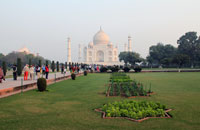 |
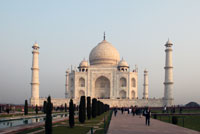 |
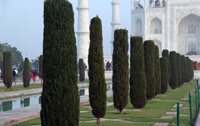 |
| |
|
The domePerhaps the most remarkable aspect of the mausoleum is the dome, the height of which is about 115 feet, the same as the base of the building. The cylindrical drum it sits on adds an additional 23 feet. It is usually called an onion dome. Four smaller domes are placed at the corners.
|
| Ornamentation on the dome is the inverted lotus, a symbol in the Hindu religion of life and renewal. |
 |
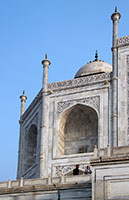 |
| |
|
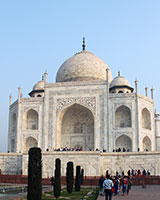 |
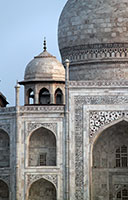 |
 |
| |
|
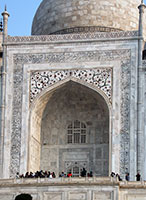 |
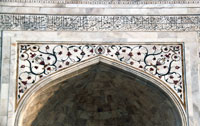 |
Mortared areas of the tomb have been painted in a contrasting color so that complex geometric patterns stand out. |
| |
|
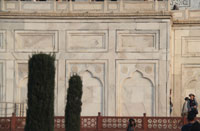 |
 |
 |
| |
|
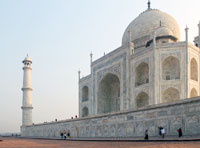 |
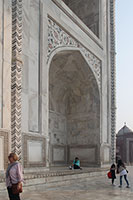 |
 |
| |
|
|
|
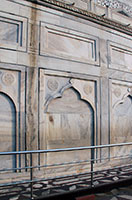 |
| |
|
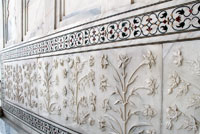 |
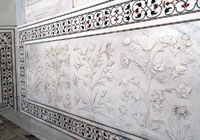 |
White marble dados on the lower walls of the tomb are sculpted with delicate floral motifs and graceful vine details. The polished marble emphasizes the elegant detailing of these carvings. |
| |
|
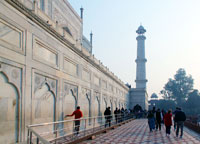 |
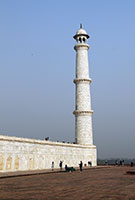 |
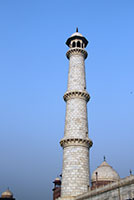 |
| |
|
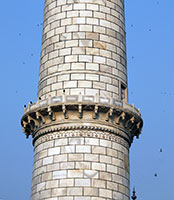 |
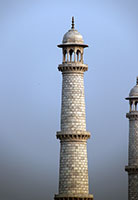 |
|
| |
|
The Mosque on the left side of the tomb (a matching Guesthouse is on the right); center: The Yamuna River; right; the Tomb seen from the Taj Mahal Hotel
|
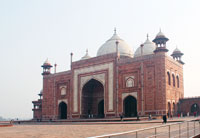 |
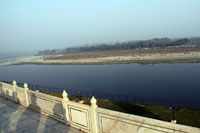 |
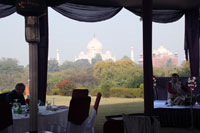 |


 Click here to return to index of art historical sites.
Click here to return to index of art historical sites.
 Click here to return to index of artists and architects.
Click here to return to index of artists and architects.
 Click here to return to chronological index.
Click here to return to chronological index.
 Click here to see the home page of Bluffton University.
Click here to see the home page of Bluffton University.

